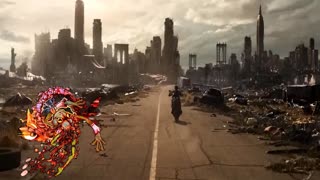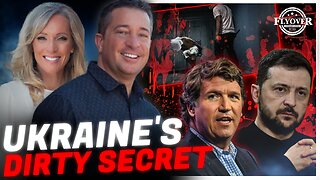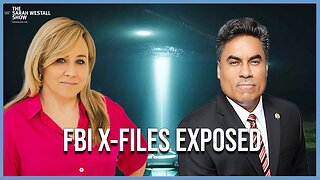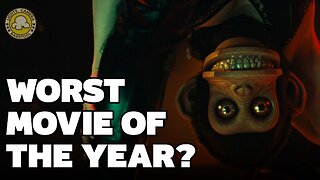Premium Only Content

Snowpiercer Lithium Nirvana
"Lithium" is a song by the American rock band Nirvana, written by vocalist and guitarist, Kurt Cobain. It appears as the fifth track on the band's second album Nevermind, released by DGC Records in September 1991.
In a 1992 interview with California fanzine Flipside, Cobain explained that the song was a fictionalized account of a man who "turned to religion as a last resort to keep himself alive" after the death of his girlfriend, "to keep him from suicide." Nirvana biographer Michael Azerrad described its lyrics as "an update on Marx's description of religion as the 'opiate of the masses.'"
"Lithium" was released as the third single from Nevermind in July 1992, peaking at number 64 on the US Billboard Hot 100 and number 11 on the UK Singles Chart. It also reached number one in Finland and the top five in Ireland and Portugal. The accompanying music video, directed by American filmmaker Kevin Kerslake, is a compilation of live footage from the band's October 31, 1991, concert at the Paramount Theatre in Seattle, Washington, and from the completed but then-unreleased film, 1991: The Year Punk Broke.
Written in 1990, "Lithium" was debuted at a video session at the Evergreen State College's television studio in Olympia, Washington on March 20, 1990. The full session, which also included versions of three songs from the band's 1989 debut album, Bleach, was directed by Jon Snyder and conceived by Cobain as a potential video release. It featured the band performing live while a montage of television footage taped by Cobain at home playing in the background. To date, no full songs from this session have been officially released by Nirvana's record company, although videos for "Lithium" and "School," edited by Snyder and featuring additional footage and still photos, appeared on two episodes of 1200 Seconds, a television show produced by Evergreen students. The episodes aired in the fall of 1990 on a local community access cable station.
The song was added to Nirvana's setlist soon after, over a year before the release of Nevermind. Kim Thayil, guitarist of Seattle rock band Soundgarden, recalled hearing it for the first time during Nirvana's show at the Off Ramp Cafe in Seattle on November 25, 1990, saying that "when I heard 'Lithium,' it stuck in my mind. Ben, our bass player, came up to me and said, 'That's the hit. That's the Top 40 hit right there."
In April 1990, "Lithium" was recorded by Butch Vig at Smart Studios in Madison, Wisconsin, during the recording sessions for what was intended to be a second album for the band's original label, Sub Pop. However, the release was abandoned after the departure of drummer Chad Channing later that year, and the eight-song session was instead circulated as a demo tape, which helped generate interest with the band among major labels.
On September 25, 1990, Cobain performed a solo acoustic version of the song on the Boy Meets Girl show, hosted by Calvin Johnson, on KAOS (FM) in Olympia, Washington.
"Lithium" was re-recorded by Vig in May 1991 at Sound City Studios in Van Nuys, California, during the sessions for what became Nirvana's second album and major-label debut, Nevermind. Preliminary attempts at recording the song's instruments were unsuccessful, in part because the band was having a difficult time maintaining a steady tempo, and kept speeding up. After one failed take, the band abandoned the song as a "frustrated" Cobain began playing the song, "Endless, Nameless" instead. This version of "Endless, Nameless" was released as the album's hidden track. The band's timing problems were immediately solved when their new drummer, Dave Grohl, took Vig's advice to play with a metronome. Vig also advised Grohl to use simpler fills and patterns for the song than he had initially attempted.
The song's quiet verses and loud choruses dynamic also presented a challenge for Vig, who said that "getting the verses to sound relaxed and the chorus to sound as intense as possible, and make the transitions feel natural and effortless, was a hard one to do." As Vig recalled, "Kurt wanted to be able to play the guitar very ... not methodical-it needed to have this space." The dark sound of the distorted guitar was achieved by using a Big Muff fuzzbox played through a Fender Bassman bass amplifier, recorded with what Vig believes was an U47 microphone that he usually used to record bass guitar. The vocals for the song's verses were recorded in two takes, with the second take being used as the master vocal track, although Vig used the second line of the second verse from take one. The chorus vocals were quickly recorded and double-tracked after.
According to Cobain, "Lithium" was "one of those songs I actually did finish while trying to write it instead of taking pieces of my poetry and other things".
In his 1993 biography Come As You Are: The Story of Nirvana, Azerrad described the song's title as "an update on Marx's description of religion as the 'opiate of the masses.'" Gillian G. Gaar described it as "a song whose sing-along melody typically masks the disturbing quality of the lyric, which touches on the solace one can find in religion or madness." As Cobain explained, "In the song, a guy’s lost his girl and his friends and he’s brooding. He’s decided to find God before he kills himself. It’s hard for me to understand the need for a vice like [religion] but I can appreciate it too. People need vices.”
In Come As You Are, Cobain acknowledged that the song might have been inspired in part by the time he spent living with his friend Jesse Reed and his born-again Christian parents. Cobain told Azerrad that he wasn't necessarily anti-religion, saying that "I've always felt that some people should have religion in their lives ... That's fine. If it's going to save someone, it's okay. And the person in ['Lithium'] needed it."
Snowpiercer is a 2013 post-apocalyptic science fiction action film based on the French climate fiction graphic novel Le Transperceneige by Jacques Lob, Benjamin Legrand and Jean-Marc Rochette. The film was directed by Bong Joon-ho and written by Bong and Kelly Masterson. A South Korean-Czech co-production, the film marks Bong's English-language debut; almost 85% of the film's dialogue is in English.
The film stars Chris Evans, Song Kang-ho, Tilda Swinton, Jamie Bell, Octavia Spencer, Go Ah-sung, John Hurt, and Ed Harris. It takes place aboard the Snowpiercer train as it travels a globe-encircling track, carrying the last remnants of humanity after a failed attempt at climate engineering to stop global warming has created a new Snowball Earth. Evans stars as Curtis Everett, leader of the lower-class tail-section passengers, as they rebel against the elite of the front of the train. Filming took place at Barrandov Studios in Prague, using train car sets mounted on gimbals to simulate the train's motion.
Snowpiercer received critical acclaim, and appeared on many film critics' top ten lists of 2014 after its international release, with praise for its vision, direction, and performances, particularly by Evans and Swinton. In the United States, the film was initially planned for a limited-screen showing but the critical response prompted The Weinstein Company to expand the showing to more theaters and to digital streaming services. With a budget of $40 million, it remains one of the most expensive South Korean productions ever.
In 2031, 17 years after an attempt to stop global warming via stratospheric aerosol injection catastrophically backfires and creates a new ice age, the remnants of humanity have taken to a self-sustaining circumnavigational train, the Snowpiercer, run by reclusive transportation magnate Wilford. The passengers on the train are segregated, with the elite in the extravagant front cars and the poor crammed into squalid tail compartments overseen by armed guards.
Urged by his mentor, Gilliam, Curtis Everett and his second-in-command, Edgar, lead the tail passengers in a revolt after they realize the guards' weapons have no ammunition; bullets are believed to be "extinct" due to a previous revolt. They free Namgoong Minsoo, a captive security specialist, who insists that his clairvoyant daughter, Yona, be freed as well. Namgoong helps the tail mob progress forward, but they find themselves facing guards with melee weapons, overseen by Minister Mason. During the battle, the train goes into a tunnel, causing total darkness. The guard force, who have night vision, begin picking off the blind rebels. However, the tail-sectioners launch a counterattack with torches and push the guards back. Edgar is held hostage, but Curtis abandons him to capture Mason, forcing her to order the remaining guards to surrender while Edgar is fatally stabbed. The tail army stays back, holding the guards captive, while Curtis takes Mason, Namgoong, Yona, skilled fighter Grey, and Tanya and Andrew (two parents who have had their children taken from them) toward the front of the train.
Curtis's group travels through several opulent cars. Namgoong and Yona recognize a landmark outside and consider that the ice may be thawing. The group reaches a schoolroom, where a teacher is indoctrinating the children on Wilford's greatness. A bald man brings eggs for the children to open to celebrate the eighteenth circumnavigation of the Earth. The bald man goes to the tail army and shoots them with loaded automatic guns hidden under the eggs, revealing that bullets still exist. The captured guards are freed, as is Mason's henchman Franco. The teacher, who received a gun from the bald man, kills Andrew before Grey kills her. Franco broadcasts to the classroom his execution of Gilliam, which prompts Curtis to kill Mason. Curtis's group moves on, but Franco catches up with them, killing Grey and Tanya. Franco is then seemingly killed by Curtis and Namgoong. The two, along with Yona, continue onward.
In the last car before the engine, Namgoong reveals that the reason he collected the drug Kronole was to use it as an explosive to escape the train with Yona, believing they can survive. Curtis stops them, as he wants to meet Wilford; Curtis explains that in the early days of the train, 17 years before, the tail section had resorted to cannibalism, and he had been ready to eat the infant Edgar but Gilliam offered him his arm instead. Curtis wants to face Wilford to ask why he created this closed ecosystem. The engine door opens, and Wilford's assistant Claude emerges and wounds Namgoong before inviting Curtis inside.
Curtis meets Wilford and, to his shock, learns that he and Gilliam conspired to stage Curtis's rebellion to reduce the tail section's population to sustainable levels. Wilford orders 74% of the tail passengers killed. He then offers Curtis his position leading the train. Curtis appears ready to accept as Yona overpowers Claude, rushes in, and asks for matches. In desperation she pulls open a floorboard, with Curtis' help, to reveal Tanya's son, Timmy, working the engine as a machine part, taken from his mother to be a slave. Appalled, Curtis knocks out Wilford and rescues Timmy from the machinery, though he loses his arm in the process. Curtis gives Yona matches to light the fuse for the Kronole bomb, while Namgoong fights and kills Franco, who had followed them, along with partygoers from another car. Andy, Andrew's missing son, crawls out of a nook and is unresponsive to Curtis' begging as he climbs into the engine. As the door to the engine room was damaged during the fighting and will not close, Curtis and Namgoong use their bodies to protect Yona and Timmy from the blast.
The explosion triggers an avalanche that derails and wrecks the train. With Namgoong unresponsive, Yona escapes the wreckage with Timmy. They see a polar bear in the distance, indicating that life exists outside the train.
-
 16:48
16:48
Psychological operations
10 days agoBad Moon Rising Up Around The Bend Long As I Can See The Light Susie Q CCR
1441 -
 3:21:29
3:21:29
Alex Zedra
11 hours agoLIVE! New Game | R.E.P.O
51.6K4 -
 1:52:42
1:52:42
Kim Iversen
13 hours ago💰 CHA-CHING! 💰 Trump Unveils Big Money Plans For Gaza AND America
67.5K201 -
 1:05:28
1:05:28
Flyover Conservatives
1 day agoUkraine’s Dirty Secret: The Christian Persecution No One Wants to Talk About - Alex Newman | FOC Show
68.2K25 -
 2:00:20
2:00:20
Glenn Greenwald
18 hours agoThe View from Moscow: Key Russian Analyst Aleksandr Dugin on Trump, Ukraine, Russia, and Globalism | SYSTEM UPDATE #414
167K68 -
 1:10:55
1:10:55
Donald Trump Jr.
15 hours agoBREAKING NEWS: My Father Revokes Biden-Maduro Oil License, LIVE with Maria Corina Machado | Triggered Ep.220
227K207 -
 1:25:29
1:25:29
Sarah Westall
13 hours agoX-Files True History, Project Blue Beam, Cabal Faction War w/ Former FBI Agent John DeSouza
99.8K40 -
 7:03:49
7:03:49
Dr Disrespect
21 hours ago🔴LIVE - DR DISRESPECT - NEW PC VS. DELTA FORCE - MAX SETTINGS
185K29 -
 49:04
49:04
Lights, Camera, Barstool
1 day agoIs The Monkey The Worst Movie Of The Year?? + Amazon Gets Bond
85.7K5 -
 24:19
24:19
Adam Carolla
1 day agoDiddy’s Legal Drama Escalates, Smuggler Caught Hiding WHAT? + Philly Eagles & The White House #news
173K22